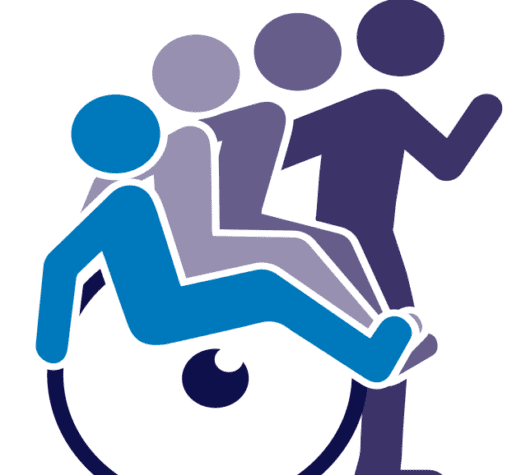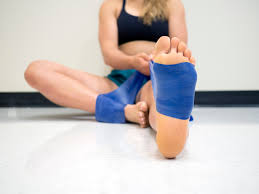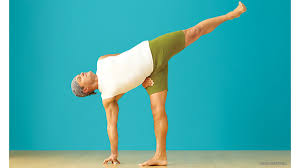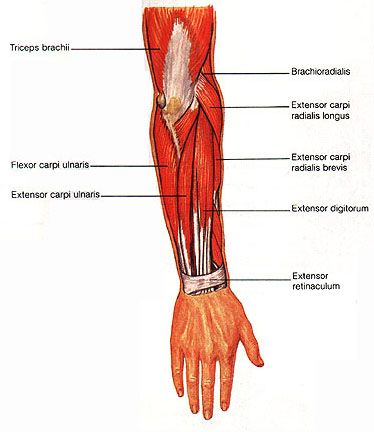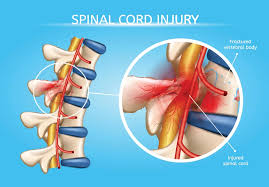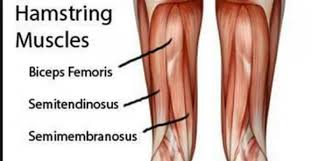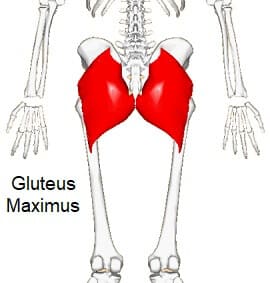5 Easy Exercises to Strengthen Your Ankles at Home
Table of Contents
Introduction:
For stability, balance, and injury prevention during regular activities or exercise, strong ankles are crucial. Limited mobility, pain, and sprains can result from weak ankles. The good news is that strengthening them doesn’t require expensive equipment or a gym.
Ankle strength, flexibility, and general foot health may all be enhanced with a few easy exercises performed at home. You can strengthen and fortify your ankles with these five simple workouts.
Benefits of 5 Easy Exercises to Strengthen Your Ankles at Home:
- Improved Stability and Balance: When you walk, run, or carry out regular tasks, you may maintain greater balance by strengthening your ankles.
- Injury Prevention: Common injuries like sprains, twists, and strains are less likely to occur in people with stronger ankles.
- Improved Mobility: Consistent ankle workouts improve flexibility, which facilitates and secures activities like lunges, leaps, and squats.
- Improved Athletic Performance: Powerful and regulated motions during exercises, jogging, and sports are supported by strong ankles.
- Pain Reduction: By reducing pain caused by weak ankles, overuse, or small accidents, strengthening exercises can promote the general health of the legs and feet.
5 Easy Exercises to Strengthen Your Ankles at Home Video:
5 Easy Exercises to Strengthen Your Ankles at Home:
Ankle Circles:
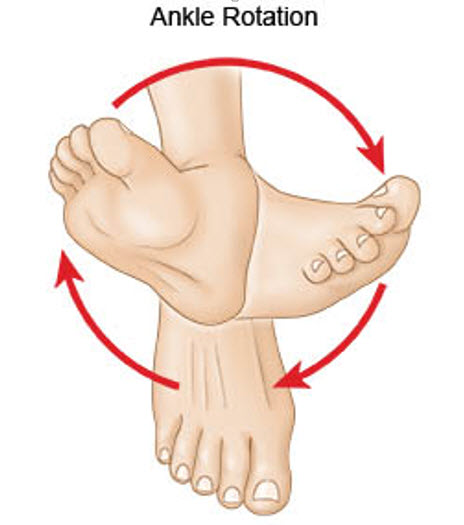
Ankle circles are a quick and easy way to increase ankle mobility and flexibility. To do these, raise one leg slightly off the floor while sitting or standing, then slowly spin your ankle in a clockwise and counterclockwise circle.
In addition to increasing the range of motion and lubricating your joints, this exercise works the muscles surrounding your ankle, which can help prevent stiffness and lower your chance of injury. Regularly performing ankle circles will improve stability and balance, which will make daily activities and exercise safer and more effective.
Calf Raises:
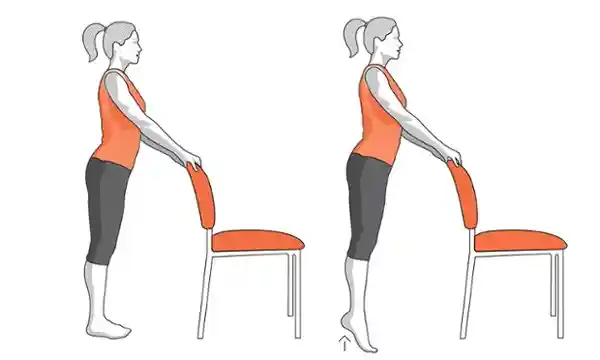
A simple exercise that works the muscles in your lower legs, especially the calves and the muscles that support your ankles, is the calf raise. To execute them, place your feet hip-width apart, slowly raise your heels off the floor to stand on the balls of your feet, and then carefully drop yourself back down.
This exercise improves balance, mobility, and general lower-body strength by strengthening the calves and stabilizing muscles surrounding the ankles. Frequent calf raises can improve sports performance, reduce the risk of ankle injuries, and make everyday tasks like jogging, walking, and climbing stairs more enjoyable and secure.
Resistance Band Ankle Flexion:
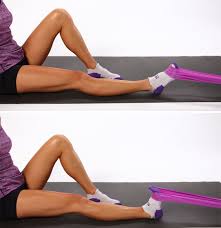
An excellent exercise for strengthening the muscles surrounding your ankles while improving your general stability is resistance band ankle flexion. With your legs outstretched, sit on the floor, wrap a resistance band over the ball of one foot, and grasp the ends with your hands to complete the exercise. Against the resistance of the band, slowly bring your toes closer to your body before stepping back into the beginning position.
This deliberate motion improves ankle mobility, strengthens the lower leg’s anterior muscles, and reduces the risk of injury. Frequent practice may strengthen your ankles’ resilience during daily activities or exercise, promote good walking and running mechanics, and enhance your balance.
Ankle Toe Movement:
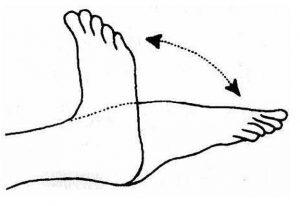
Simple exercises that improve ankle flexibility and coordination are toe taps, toe flexes, and ankle toe motions. They may be done by sitting or standing with your feet flat on the floor, lifting your toes and down alternatively while keeping your heels grounded.
This workout develops the muscles that provide stability and balance, increases circulation, and works the muscles surrounding your ankles and feet.
Frequent practice can help avoid stiffness, lower the chance of ankle injuries, and improve the safety and smoothness of daily motions like jogging, walking, and climbing stairs.
Lateral Band Walks:
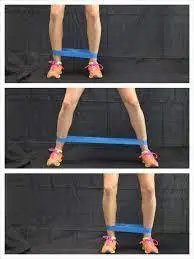
Lateral band walks are a great way to improve stability and balance while strengthening the muscles surrounding your legs, hips, and ankles. They are performed by placing a resistance band around your feet or just above your ankles, bending your knees slightly, and taking controlled sideways steps while keeping the band taut.
Ankle rolls and sprains can be avoided with this exercise, which works the muscles that provide lateral stability. Performing lateral band walks regularly promotes superior movement mechanics in everyday activities and sports, increases coordination, and strengthens the lower body overall.
Conclusion:
Maintaining balance, avoiding accidents, and increasing general mobility all depend on strengthening your ankles. Without specialized equipment, you may perform the five simple exercises at home: lateral band walks, resistance band ankle flexion, ankle toe motions, calf lifts, and ankle circles.
You may improve your performance in everyday activities or exercise, strengthen and stabilize your ankles, and lower your risk of sprains and other ankle-related conditions by doing these exercises regularly. Maintaining your ankle strength and general lower-body health requires consistency, and even a short daily workout may have a significant impact.
FAQs
By increasing ankle range of motion and stimulating the foot’s muscles and nerves, walking barefoot can have a major positive impact on foot health. It increases the ankle’s range of motion, enhancing its strength and flexibility while activating neurons that support improved posture and balance.
Difficulty Deep Squatting: Limited ankle dorsiflexion may be the cause if you have trouble keeping your heels down or keeping your torso erect during a deep squat. Decreased Running Efficiency: Your stride and ground contact time are impacted by limited ankle mobility, which results in energy waste and decreased speed or endurance.
Apply the RICE technique to severe ankle pain: To lessen swelling, rest the ankle, apply ice for 15 to 20 minutes at a time, compress it with an elastic bandage, and raise it above your heart. Pain and inflammation can be controlled using over-the-counter medications such as naproxen (Aleve) or ibuprofen (Advil, Motrin IB). Once the initial pain has subsided, mild workouts can also help with stiffness. However, if the pain persists for more than a few days, cease and consult a healthcare provider.
It’s crucial to remain moving to prevent the muscles and ankle from becoming rigid, but you should refrain from undertaking any intense workouts, like jogging, until the pain and swelling have subsided. As soon as your ankle pain subsides, begin some mild workouts.
Ankle arthritis’s initial symptoms include pain, stiffness, and sometimes swelling, particularly after extended standing or walking or after high-impact exercises like jogging.
This exercise can also be performed while lying on your back with a cushion supporting your affected leg. Slowly trace the alphabet’s letters while raising the heel of the affected foot off the ground. Repeating these steps with your other foot is a smart idea.
A need for medical treatment may be indicated by sudden pain, swelling, difficulty walking, and other symptoms. Prolonged waiting can result in arthritis, more complicated treatments, inferior long-term outcomes, and recurrent injuries.
Conditions, including osteoporosis and muscular weakness, which can show up as cramps, leg and foot pain, and even stress fractures, have been related to low vitamin D levels.
Healthcare professionals advise applying the PRICE technique for the first 24 to 48 hours following injury for the majority of ankle sprains. PRICE stands for elevation, compression, ice, protection, and rest. defense. To reduce the usage of your damaged ankle, use crutches or put on a brace or splint.
This often occurs when your ankle ligaments are no longer working correctly due to repeated ankle sprains. An underlying foot deformity or weak muscles might occasionally be significant factors. You may have chronic ankle instability if your ankle gives out frequently.
For weak ankles, high-top styles offer essential lateral assistance. Basketball-style shoes like the Nike Air Monarch are ideal for sports activities, while hiking boots like the Merrell Moab and Vasque provide outstanding stability for everyday use.
Seniors with weak legs might benefit from activities like sitting, marching, or leg lifts. One leg at a time, held for a few seconds, and then lowered gently, is how seniors may practice sitting leg lifts. By strengthening the quadriceps, this easy workout increases leg strength and endurance in general.
Different areas of your ankle and lower leg are strengthened when you walk on your toes and heels. Take around 20 steps forward on the balls of your feet while lifting your heels for toe walking. To do heel walks, raise your toes and take 20 steps forward on your heels. Do it three times.
When compared to younger individuals, older adults’ decreased ankle stiffness at comparable exertion may have a detrimental effect on their ability to manage their balance. Older persons may stand with lower ankle stiffness if they perform the same amount of effort as younger adults, or they may exert more effort to get the same level of stiffness.
Try activities that strengthen and stabilize the ankle, including resistance band exercises, heel lifts, and towel scrunches, as well as exercises that increase range of motion, like ankle pumps and writing the alphabet. Do a little warm-up with ankle pumps and circles before you begin, and always get advice from a physician or physical therapist, particularly following surgery or an accident, since they may prescribe exercises tailored to your situation.
Utilize the stairs. If you have steps of any kind, whether they are inside or outside your house, they can help strengthen your ankles. Holding onto the handrails while staying on the step edge is a simple workout.
Numerous internal and external causes might contribute to weak ankles. Genetics is one example of an intrinsic element; a person may inherit a tendency toward ankle instability or weak ligaments. External impacts like injury, repeated strain, or inappropriate footwear are examples of extrinsic factors.
Ankle strength and joint position sense improved after a progressive 6-week strength-training program with rubber exercise tubing. According to these results, strength training that does not prioritize proprioception may help address deficiencies in both proprioception and strength.
As a result, some muscle groups become weaker than others. You can move your feet freely when you’re barefoot, something that shoes usually don’t let you do. Your feet get stronger and healthier overall as a result of this movement of the various foot sections.
Tip-toe walking and heel walking are two more excellent practical ankle-strengthening exercises. To walk on your tiptoes, raise your heels off the ground, and take a few steps.
References:
- Clinic, C. (2022b, December 22). How to strengthen your ankles. Cleveland Clinic. https://health.clevelandclinic.org/ankle-exercises-weak-ankles
- Marcin, A. (2017, July 13). 8 ankle stretches to try at home. Healthline. https://www.healthline.com/health/fitness-exercise/ankle-stretches
- Inverarity, L., DO. (2024, May 18). Ankle strengthening exercises for ankle injuries. Verywell Health. https://www.verywellhealth.com/ankle-exercises-a-complete-guide-2696480
- Hecht, M. (2019, May 28). 12 Stretch and strength moves for ankle mobility. Healthline. https://www.healthline.com/health/ankle-mobility
- Calf raise. (n.d.). [Video]. Hingehealth. https://www.hingehealth.com/resources/articles/ankle-strengthening-exercises/
- 5 Exercises to Reduce Ankle Pain | Fort Worth Bone & Joint Clinic. (n.d.). https://thcboneandjoint.com/educational-resources/foot-exercises.html
